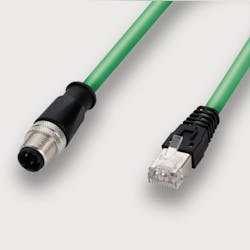Fieldbus in the Industrial Ethernet Age
At this point, it’s obvious that Ethernet is fast replacing the fieldbus networks that have dominated industry for decades. A clear case in point comes from Michael Bowne, executive director at PI North America, which promotes the Profibus (fieldbus) and Profinet (Ethernet) industrial communications protocol. According to Browne, today, four Profinet nodes are sold for every Profibus node. This represents a 180-degree change from a decade ago.
Despite this change, plenty of fieldbus networks remain in place across global industrial sites; and some sites continue to purchase and install fieldbus, as evidenced by Bowne’s comment. To find out more about the continuing relevance, or lack thereof, of fieldbus protocols in the age of industrial Ethernet, we connected with Duane Grob principal engineer and business unit director at Avanceon, a system integration and engineering services company, for a recent episode of the “Automation World gets Your Questions Answered” podcast series.
To start our conversation, we wanted to find out from Duane if his interactions with manufacturers reflect what we’re hearing about the growing preference for Ethernet over fieldbus in industry.
A major factor driving the expansion of Ethernet in industry were the emergence of industrial grade hubs, switches, and routers that make Ethernet communications more robust, predictable, and less prone to drop data, Grob said. Plus, “there's a bunch of already-ported fieldbuses that most people are familiar with, like Modbus, EtherNet/IP and Profinet, which were fieldbuses that had the protocols converted over to Ethernet,” he added. This created “a larger development community working on Ethernet evolution than on any specific fieldbus” And that community continues its work.
With all the major field device manufacturers offering an Ethernet option, often supporting multiple protocols over Ethernet, the fact is “engineers, developers, and electrical support personnel understand that technology and generally have a fair amount of Ethernet already in place in the industrial landscape,” said Grob. You know, they've already got SCADA, HMI, and PLCs using Ethernet and have been for many years. So the knowledge base within the OT (operations technology) environment within the plant maintenance groups is pretty widespread.”
Explaining why fieldbus remains so prominent in many factories across the globe, Grob noted that replacing fieldbus with Ethernet is generally not the primary reason most manufacturers take on an Ethernet installation project. “Typically, they're looking for a way to replace or add devices, and they're looking for things that will give them better information,” he said. “And that's one of the reasons why they're moving towards a more robust environment like Ethernet—the desire to get more diagnostics. Ethernet is an inexpensive addition for smart devices that can be added to instrumentation. In fact, it's the preferred connection for its ability to help see problems arising and provide a diagnosis before a problem takes the process down. So in this scenario, we seldom see fieldbus recommended if there is an Ethernet option.”
Opting for fieldbus
Even though Grob noted that fewer people are requesting fieldbus connectivity today, a market still remains for the technology. “Some discrete I/O fieldbuses, particularly, like ASI and CANbus [are still used] because they have more consistent response times. And they're very simple to use and implement. ASI and CANbus offer an inexpensive digital I/O bus and can be really attractive for applications like building maintenance or conveyor systems. But typically, there's an I/O mixture of discrete analog. So, once you get into that point of starting to introduce analog, then you start introducing information—and the information becomes more important. And if you're doing information on the analog side, you should be doing information on the digital side too. Ethernet then becomes more of a standard and robust connectivity tool at that point.”
Grob added that, when installing Ethernet, one thing all users should investigate is its use in classified areas; for example, where intrinsic safety may be needed. In such cases, “you might want to look at a fieldbus because there are some fieldbuses made specifically for those types of environments,” he said. “Even though Ethernet can be used in these environments, you have to make sure you're getting the proper tools for Ethernet to be used in those environments.”


